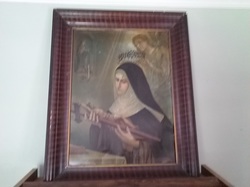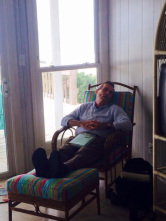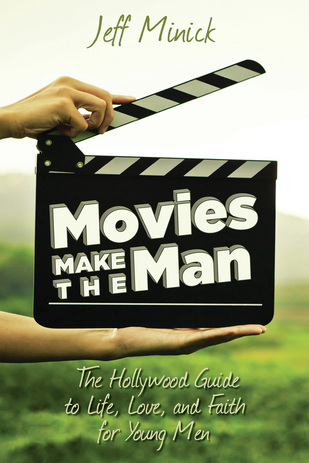
When dissatisfaction with Father Stott reached its peak, a band of disgruntled souls, including some of our parish council members, wrote a letter to our bishop demanding a meeting. The bishop duly appeared, listened to their complaints, then informed them Father Stott was our priest and they should get used to that idea. After the bishop departed, some of the parish council resigned, at which point Father Stott, as was his right, appointed to the council people who had supported him, including the most newly minted member of the church.
Eventually, the dust and smoke of this explosion settled. Some people ditched Saint John’s to attend the Catholic church in nearby Maggie Valley. Others decided, as the bishop had advised, to get used to the idea of Father Stott. Over the next months, there were some skirmishes, but the war was over.
During this crisis, and for the rest of his stay in Waynesville, Father Stott, whom I soon called Father Tom, became a friend. Though Kris and I had frequented the Episcopalian church before my conversion, Saint John’s was the first church in which I had fully participated as an adult, and the disdain shown toward the priest by some of the congregation had shocked me. Throughout his stay in Waynesville, and especially during those first months of crisis when he required moral support and a sympathetic ear, the two of us visited many times, taking long walks through the town or sitting in his office. Often, too, Kris and I asked him to our home for a meal or for a family gathering.
During our many hours together I learned some things about the man behind the collar.
Tom Stott grew up in Albany, New York. At some point, his father abandoned the family. If I remember correctly, his mother operated a corner grocery store, where Tom worked after school. Too poor to attend college, he enlisted in the Navy and served in Vietnam as a corpsman, where during a firefight he was struck in the hand with shrapnel while treating a wounded Marine. On his return from the war, he somehow ended up in North Carolina, where he worked as a nurse anesthetist in Greensboro. After a time, he felt called to the priesthood, enrolled in seminary, graduated, and was ordained to the priesthood in 1983.
Like the rest of us, Father Stott had his flaws. He was combative and abrasive, often unintentionally so, which is even worse than intended abrasion. Though he openly recognized that the parish would fall apart without its platoon of female volunteers, he had a bent toward misogyny. He was also possessed of a Napoleonic complex, being one of those short men who resent their taller fellow beings. In Father Tom’s case, he qualified this prejudice by particularly resenting tall men of Anglo-Saxon descent.
Yet what few people witnessed were his acts of compassion.
For two years, Father Tom breakfasted four or five mornings a week at nearby café, taking with him a deaf woman, Fanny, and paying for her meal. “She has no one to care for her,” he explained when I asked his reason for these excursions. On another occasion, he helped a man in his nineties, again a non-Catholic, find shelter in an assisted-living program. On Christmas Day he always made certain the police officers working the holiday received a hearty Christmas lunch of turkey and side dishes. He loved department store sales, and when the local Roses Store was offering going-out-of-business sales, he spent several hundred dollars on whatever touched his fancy, distributing his booty to parishioners, friends, and the impoverished like some magnanimous king.
To those Catholics who engaged him, Father Stott often offered wise advice about the Faith and about life in general. Once, for instance, I had gone to sell books at a homeschool fair at Bob Jones University. While rummaging through my books on the sales tables—I carried none of my Catholic books to the fair, for lack of a market in that bastion of fundamentalism—several people had denigrated Catholicism, misinformed attacks to which I had offered nothing but silence. That next week I took what I regarded as a moral failure into the confessional. On the other side of the grill Father Tom sighed, shifted on his seat, and then said, “Hundreds of thousands—no, millions—of Catholics have died over the centuries for their beliefs, but you were afraid even to say a word. You need to defend your Faith. For your penance, go to the front of the church, kneel before the crucifix, say three Hail Marys, and vow to never again hide your Faith.”
As a result of that confession and penance, to this day, whenever and wherever I pray, I make the sign of the cross before and after the prayer. It is a sign with special meaning for me, a physical reminder not only of my Faith, but also of my one-time cowardice and shame.
One final note on Father Stott: Despite his general dislike for women, he loved my wife. A bond, invisible to me, existed between the two of them. Once he said to me, “Your wife is a good woman. She never tells me what I should do. Instead, she listens to whatever I’m saying.”
For nearly ten years, Kris came to Mass with the children and me without joining the Church. When she finally made her decision to do so, she asked Father Tom to administer the rites of reception. Our parish priest gave his permission for this irregularity, and we drove to Holy Angels Catholic Church in Mount Airy, where Father Tom heard her confession and gave her First Communion.
Two years later, when Kris passed away, Father Tom, despite his own ill health, was one of the four priests on the altar for her funeral Mass. Six months later, after a lingering illness, he died as well, aged 58, in his family home in Albany.
If after death there does exist a house with many dwelling places, I pray Father Tom has found a room filled with short, orthodox Catholics, mostly male, for his companions and with Kris as a frequent visitor. I imagine her laughing with him as she once did, I imagine him delighted and surprised with himself as he once was for bringing her laughter, and I try to imagine, with the help of some future celestial grace, myself laughing and seated alongside them.
During this crisis, and for the rest of his stay in Waynesville, Father Stott, whom I soon called Father Tom, became a friend. Though Kris and I had frequented the Episcopalian church before my conversion, Saint John’s was the first church in which I had fully participated as an adult, and the disdain shown toward the priest by some of the congregation had shocked me. Throughout his stay in Waynesville, and especially during those first months of crisis when he required moral support and a sympathetic ear, the two of us visited many times, taking long walks through the town or sitting in his office. Often, too, Kris and I asked him to our home for a meal or for a family gathering.
During our many hours together I learned some things about the man behind the collar.
Tom Stott grew up in Albany, New York. At some point, his father abandoned the family. If I remember correctly, his mother operated a corner grocery store, where Tom worked after school. Too poor to attend college, he enlisted in the Navy and served in Vietnam as a corpsman, where during a firefight he was struck in the hand with shrapnel while treating a wounded Marine. On his return from the war, he somehow ended up in North Carolina, where he worked as a nurse anesthetist in Greensboro. After a time, he felt called to the priesthood, enrolled in seminary, graduated, and was ordained to the priesthood in 1983.
Like the rest of us, Father Stott had his flaws. He was combative and abrasive, often unintentionally so, which is even worse than intended abrasion. Though he openly recognized that the parish would fall apart without its platoon of female volunteers, he had a bent toward misogyny. He was also possessed of a Napoleonic complex, being one of those short men who resent their taller fellow beings. In Father Tom’s case, he qualified this prejudice by particularly resenting tall men of Anglo-Saxon descent.
Yet what few people witnessed were his acts of compassion.
For two years, Father Tom breakfasted four or five mornings a week at nearby café, taking with him a deaf woman, Fanny, and paying for her meal. “She has no one to care for her,” he explained when I asked his reason for these excursions. On another occasion, he helped a man in his nineties, again a non-Catholic, find shelter in an assisted-living program. On Christmas Day he always made certain the police officers working the holiday received a hearty Christmas lunch of turkey and side dishes. He loved department store sales, and when the local Roses Store was offering going-out-of-business sales, he spent several hundred dollars on whatever touched his fancy, distributing his booty to parishioners, friends, and the impoverished like some magnanimous king.
To those Catholics who engaged him, Father Stott often offered wise advice about the Faith and about life in general. Once, for instance, I had gone to sell books at a homeschool fair at Bob Jones University. While rummaging through my books on the sales tables—I carried none of my Catholic books to the fair, for lack of a market in that bastion of fundamentalism—several people had denigrated Catholicism, misinformed attacks to which I had offered nothing but silence. That next week I took what I regarded as a moral failure into the confessional. On the other side of the grill Father Tom sighed, shifted on his seat, and then said, “Hundreds of thousands—no, millions—of Catholics have died over the centuries for their beliefs, but you were afraid even to say a word. You need to defend your Faith. For your penance, go to the front of the church, kneel before the crucifix, say three Hail Marys, and vow to never again hide your Faith.”
As a result of that confession and penance, to this day, whenever and wherever I pray, I make the sign of the cross before and after the prayer. It is a sign with special meaning for me, a physical reminder not only of my Faith, but also of my one-time cowardice and shame.
One final note on Father Stott: Despite his general dislike for women, he loved my wife. A bond, invisible to me, existed between the two of them. Once he said to me, “Your wife is a good woman. She never tells me what I should do. Instead, she listens to whatever I’m saying.”
For nearly ten years, Kris came to Mass with the children and me without joining the Church. When she finally made her decision to do so, she asked Father Tom to administer the rites of reception. Our parish priest gave his permission for this irregularity, and we drove to Holy Angels Catholic Church in Mount Airy, where Father Tom heard her confession and gave her First Communion.
Two years later, when Kris passed away, Father Tom, despite his own ill health, was one of the four priests on the altar for her funeral Mass. Six months later, after a lingering illness, he died as well, aged 58, in his family home in Albany.
If after death there does exist a house with many dwelling places, I pray Father Tom has found a room filled with short, orthodox Catholics, mostly male, for his companions and with Kris as a frequent visitor. I imagine her laughing with him as she once did, I imagine him delighted and surprised with himself as he once was for bringing her laughter, and I try to imagine, with the help of some future celestial grace, myself laughing and seated alongside them.





 RSS Feed
RSS Feed